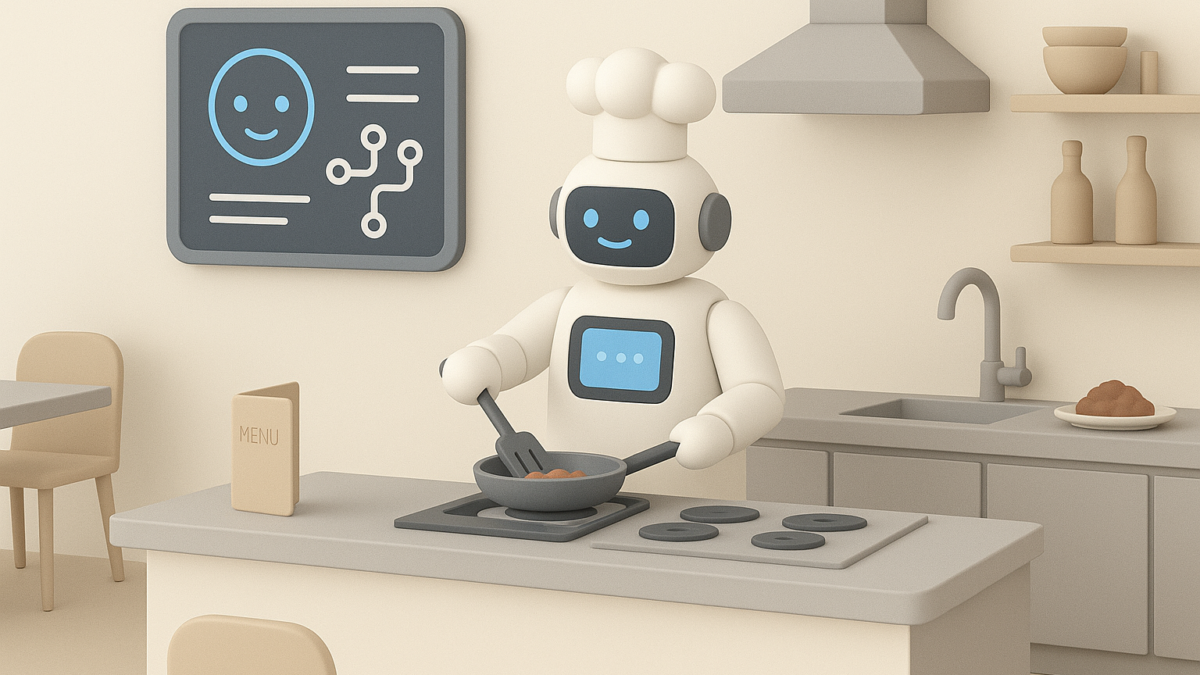Introduction
The restaurant industry has always been shaped by innovation—whether it was the rise of quick-service chains, digital ordering apps, or contactless payments. But in 2025, a new wave of disruption is taking hold: Artificial Intelligence (AI).
From automated kitchens to personalized menu recommendations, AI is redefining how food is prepared, delivered, and experienced. For restaurants, the adoption of AI isn’t just about efficiency—it’s about survival in a highly competitive market where customer expectations are evolving faster than ever.
Smart Kitchens: The Core of AI
At the heart of this transformation lies the AI-powered smart kitchen. Unlike traditional kitchens, these are equipped with sensors, robotics, and intelligent software that automate repetitive tasks, improve accuracy, and optimize operations.
Examples of Smart Kitchen Capabilities:
- Automated Cooking: Robotic arms that can flip burgers, fry food, or assemble pizzas with consistency.
- Inventory Management: AI systems track ingredient usage, predict shortages, and automatically place restocking orders.
- Energy Optimization: Smart appliances reduce energy waste by adjusting cooking cycles in real time.
By reducing human error and increasing operational efficiency, smart kitchens help restaurants cut costs while maintaining high-quality food standards.
AI in Customer Experience
AI is not limited to the back of the house. Restaurants are increasingly adopting AI-driven tools to create a more personalized and seamless dining experience.
- Personalized Menus: By analyzing customer preferences, dietary restrictions, and order history, AI can suggest customized meal options.
- AI-Powered Chatbots: Many restaurants now use conversational AI to handle reservations, answer FAQs, and manage delivery queries.
- Dynamic Pricing: Some chains experiment with AI-driven pricing models, adjusting menu prices based on demand and supply conditions.
For customers, this translates into faster service, smarter recommendations, and a dining experience that feels tailored to individual needs.
AI in Food Delivery and Logistics
Food delivery has exploded over the last few years, and AI is making it more efficient. Delivery platforms and restaurants are leveraging AI to:
- Optimize Delivery Routes: Reduce delivery time and costs using real-time traffic and weather data.
- Predict Demand: Anticipate order spikes during peak hours, events, or weather changes.
- Drone & Robot Delivery: Some restaurants are piloting AI-powered delivery robots and drones for contactless, hyperlocal service.
These innovations reduce operational bottlenecks while meeting the increasing demand for fast, convenient food delivery.
Reducing Food Waste with AI
Globally, food waste is a $1 trillion problem, and restaurants are a big contributor. AI offers sustainable solutions:
- Smart Inventory Predictions: Systems forecast how much of each ingredient is needed daily, cutting down on over-ordering.
- Portion Optimization: AI analyzes consumption data to recommend portion sizes that reduce leftovers.
- Repurposing Recipes: AI can suggest creative recipes to use ingredients before they expire.
By reducing waste, restaurants not only save money but also enhance their sustainability credentials—a factor increasingly important to modern consumers.
Challenges of AI Adoption in Restaurants
While AI promises enormous benefits, challenges remain:
- High Costs: Investing in robotics, IoT-enabled kitchens, and AI software requires significant capital.
- Staff Training: Employees must adapt to new technologies, which may involve reskilling.
- Customer Acceptance: Some diners may resist fully automated kitchens, preferring human interaction.
- Data Privacy: Personalized dining experiences require handling sensitive customer data responsibly.
Restaurants must balance innovation with human touch to ensure technology enhances, rather than replaces, hospitality.
The Future of AI in Restaurants
The restaurant of the future will be a hybrid model, blending AI-driven automation with human creativity and service. Expect:
- Fully Automated Quick-Service Outlets: Where AI handles everything from cooking to payment.
- Smart Menu Engineering: Menus dynamically updated based on seasonality, supply, and customer behavior.
- AI Health & Nutrition Advisors: Helping diners make healthier, personalized food choices.
Ultimately, AI in restaurants is not just about faster service or cost savings—it’s about creating experiences that are personalized, sustainable, and future-ready.
Conclusion
AI-powered restaurants and smart kitchens are no longer science fiction—they are today’s reality. From robotic chefs and predictive supply chains to personalized customer journeys, AI is redefining every aspect of dining.
Restaurants that embrace this transformation will not only survive but thrive, offering customers a dining experience that feels innovative and memorable.
You May Also Like: Whitepapers in the Age of AI: Why Research Consumption is Changing





